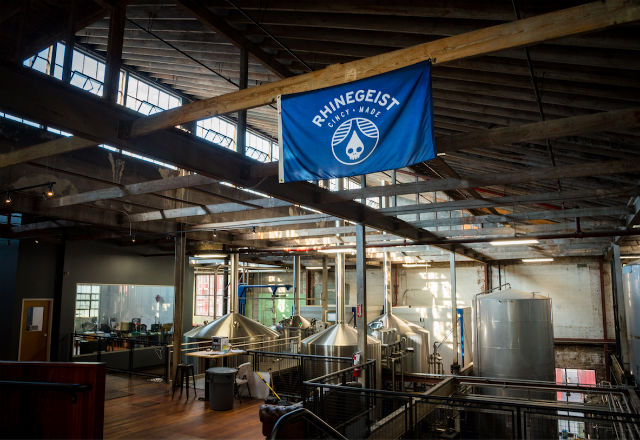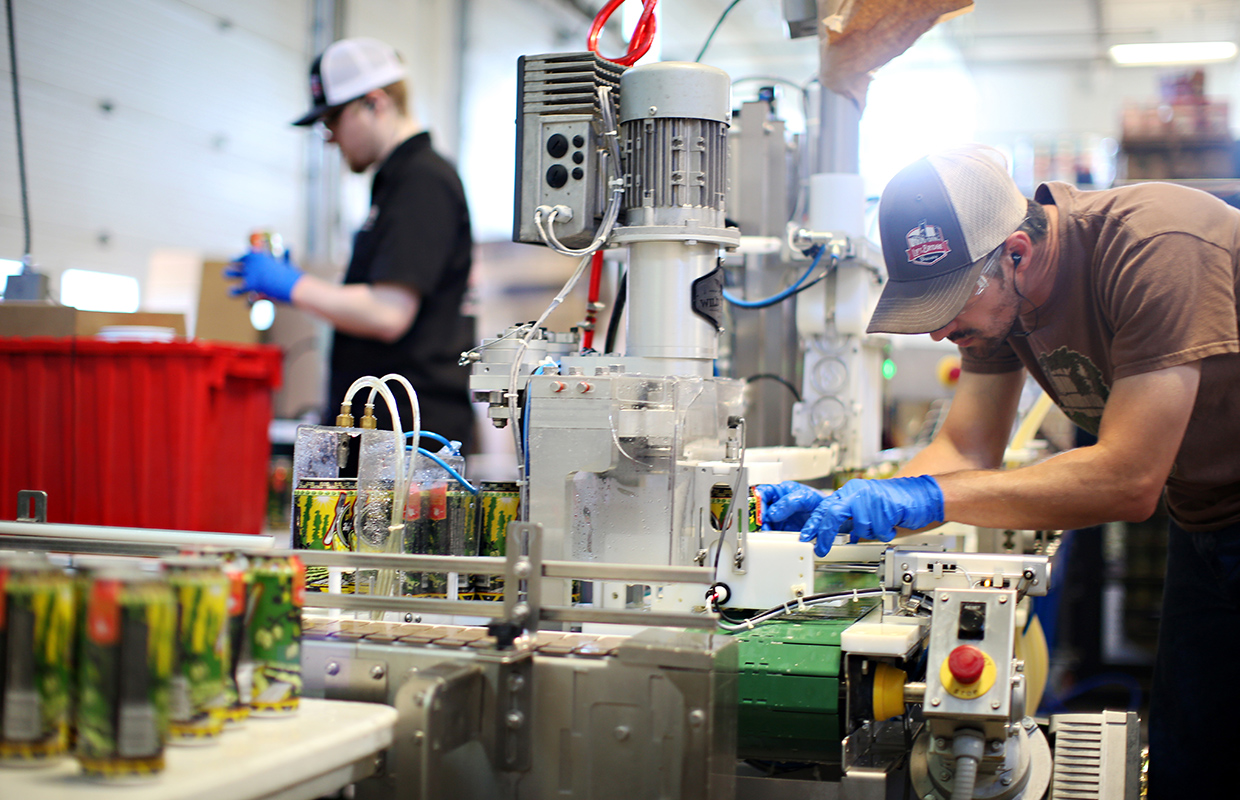
With the national rate of growth at around 7 percent, Rhinegeist Brewery grew by 80 percent in 2016.
Moving from around 31,000 barrels to more than 56,000 in 12 months, the brewery set strict growth guidelines on itself and stuck to it. That meant market penetration within the state of Ohio along with forays into Kentucky and Massachusetts.
Now, as 2017 has begun, co-founder Bryant Goulding spoke with Brewer about why his brewery, which opened in the summer of 2013, has seen so much growth, how they plan to manage the growth and what the future holds in terms of building his brewery into a regional powerhouse, and that’s as big as they want it.
Goulding feels that his area of the country is just coming into a craft renaissance, with about half of the 230-plus breweries in the state of Ohio opening in the last three and a half years.
“I think our timing was perfect,” he said. “We came into a city of two million with less than a dozen breweries at the time. Now we are closer to 30. We opened in the right place at the right time. Cincinnati is a vibrant city and people are moving back here and we have seen growth to the city in terms of business as well.”
But even with all the growth, Goulding insists that growing past what’s close to home for the most part would be “death by a million paper cuts” with so much focus going to local breweries now.
So how has the brewery leveraged its strength? Trusting its brain trust, which includes Goulding (the business guy) along with co-founder Bob Bonder (the sales guy) and brewer Jim Matt (the beer guy).
Goulding summed up the brewery’s philosophy as: “It has to make business sense, it’s informed by what is in the market and it’s gotta be great beer and we are pretty tuned into the numbers to penetrate and to understand the market.”
“It takes communication and knowing what you want to do to communicate it,” he said of working with his core group along with relaying the message to now more than 200 employees (up from 50 in 2015). “In 2016 we executed that plan and used wholesalers to do what we wanted to do.”
Distribution is another element for Rhinegeist, signing with seven total wholesalers in the state, yet doing 60 percent of its distribution on its own.
“I think we have great people, a focus on penetration and numbers and points of distribution, and layers the fuel that machine that is beer that we hope is innovative and strikes consumers right.”
Goulding relies on IRI and Armadillo figures to know how the brewery is performing and work on future plans.
He looks for space where the brewery can go and to work on penetrating deeper in the brewery’s own backyard of Ohio, Northern Kentucky and soon into Pittsburgh, the next plan for territory expansion along with one unnamed market. Goulding would not divulge on the second plan yet.
But the home state seems to be No. 1.
“That’s where we are going to win,” Goulding said. “We aren’t focused on being a national brand, we want to get deep into Ohio.”
A large percentage of Rhinegeist’s output is toward Truth, it’s IPA, which accounts for nearly half of the 56,000 barrels. But a few rising stars is under the brewery’s cider production (8% of volume) along with its rotating session IPA (also 8%).
“Our hypothesis is that when you liberally late hop Pale Ales just like IPAs, people can enjoy basking in the hop aromatics while also responsibly enjoying more than one,” Goulding said in a release. “We are strong believers in Pale Ale and the growth we’ve seen here has affirmed our faith.” He added that this rotational series has outsold the previous Pale Ale, Zen, nearly 2-to-1.
“It’s quickly turning into our No. 3 brand and it allows to feed innovation and champion cans, which are a great package,” Goulding said.
Even with the local hits, that doesn’t mean Rhinegeist will settle down. Barreled sours and a Imperial IPA along with cidering are on the docket for 2017.
Bubbles, the Cidergeist brand of Rose Cider has been a draft hit and will be canned in March. Knowledge, an Imperial IPA is a culmination of multiple test batches brewed with four pounds of Simcoe, Chinook, Centennial and Columbus per barrel, clocking in at 8.5% ABV. It will be launched year-round in a 12-ounce four pack – the brewery’s first four-pack release in early March.
Goulding added that Brett and Lactobacillus will make its appearance in the third quarter of 2017 as well, which is what he called a “big departure” from a kettled sour like the brewery’s Dodo brand.
“We’ve been balancing growing our reach responsibly while keeping our eye on quality and trying to build and improve the relationships we have with the people in accounts that sell our beer,” Goulding said. “We now have the production capacity to allow us to brew enough to ramp up for high season and continue to play in the lager and kettle souring space — we like tart and crisp.”
More of Goulding’s thoughts will be a part of an upcoming podcast from Brewer Magazine.






Be the first to comment